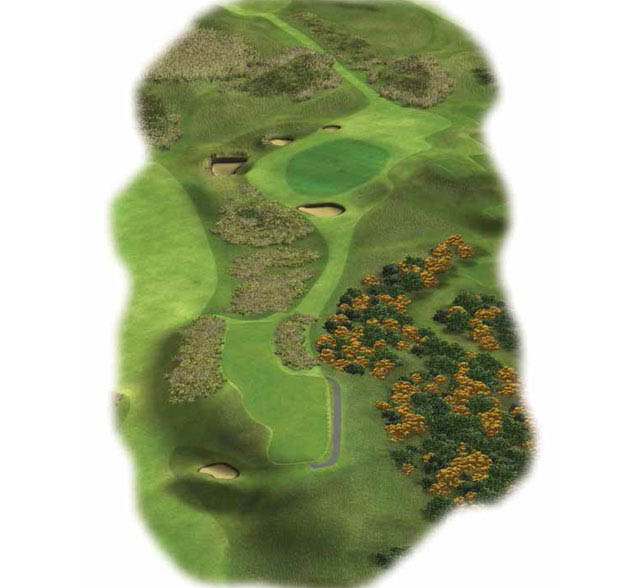
When I am designing a “Tiny Tim”-type hole I am often encouraged to design (or find) one or two fierce and often impressive looking features that will heightens the miss. This is because golfers will often play a short iron from the tee so by guarding the putting surface with some gnarly features I am asking them to play an accurate shot. In fact when it comes to par-3 holes in general, I am inclined to make them more challenging because I know everyone starts with a level (and clean) lie. Add to that, I know the distance the golfer is starting from and therefor I can design appropriately, particularly when the shot demands a carry over some fierce feature.
Often a par-3 hole is the most scenic on the golf course and this certainly goes for the very short par-3. Some of this has to do with the fact that architects often position short one-shot holes on challenging parcels of land, as cited by Hunter: “Par 3 holes are frequently used for making transitions from place to place: for instance, to avoid a long walk to another tee; to avoid the crossing of a green or fairway; to get into position for playing the wind at a different angle; or to get either up or down to a different level.”
But at the end of the day there is absolutely nothing taboo about a really good and well thought out short one shot hole (or Tiny Tim). In fact there is a good chance that this hole will be the best on the course and indeed remembered long after the round. Noted British architect John Low spoke of the fact that “a short hole should not be long” and it hard to disagree with him.
Paul Jansen is the principal architect for Jansen Golf Design. For more information, visit his website at www.jansengolfdesign.com
Pages
Click here to see the published article.











